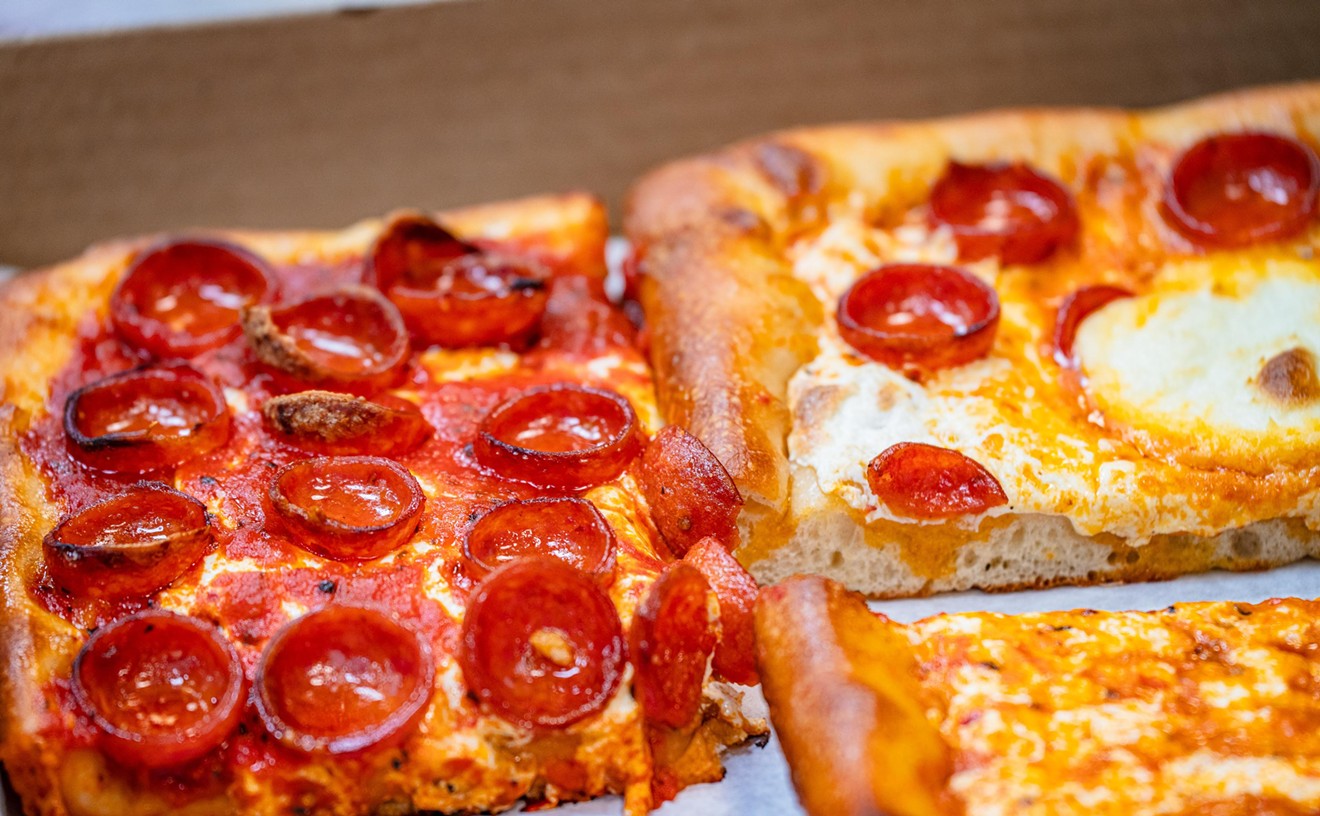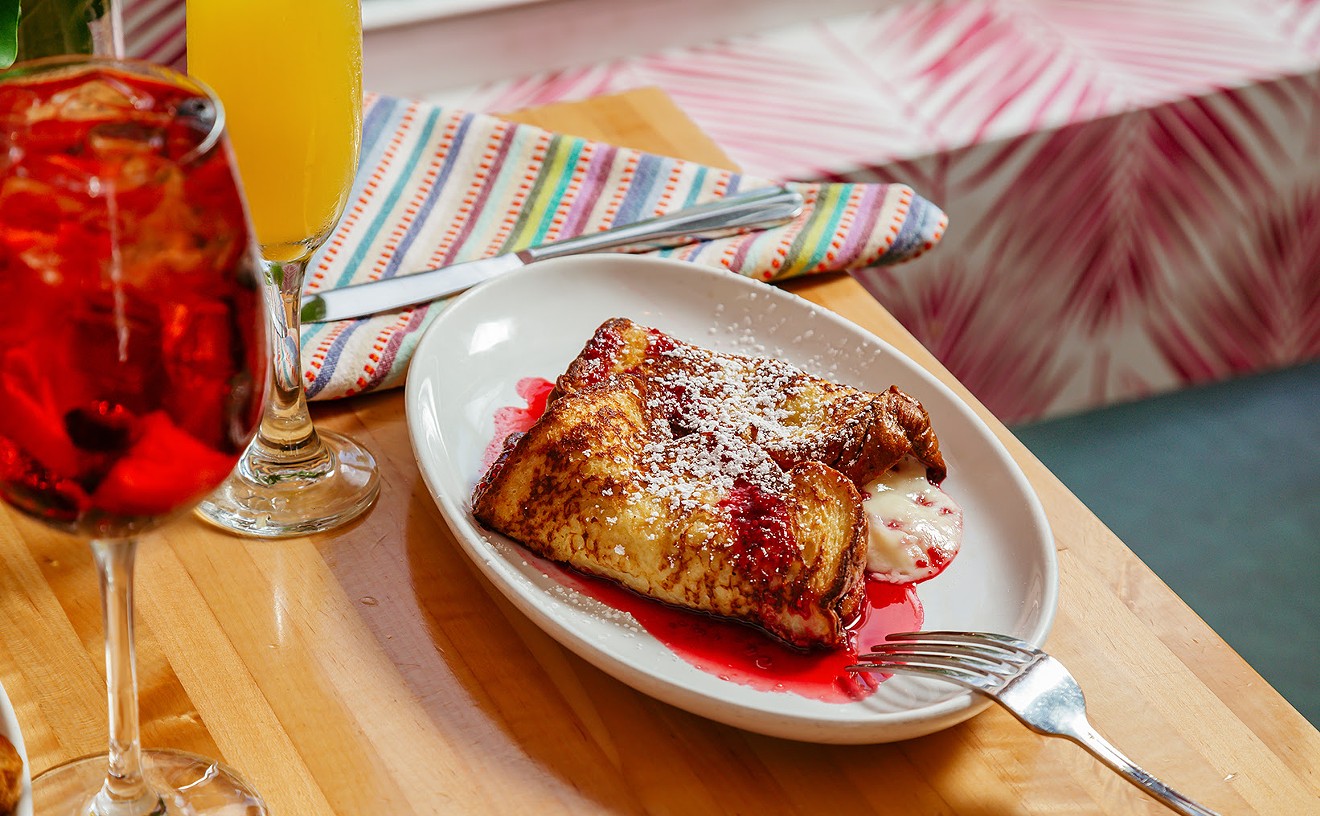The Latin/Caribbean cuisine set down in chef Phil Butler's short, smart menu is much better than anything T.G.I.F. has to offer, but it shares a chain-restaurant allegiance to tried-and-true recipes with mass appeal. In this case many of the foods adhere to the nuevo Latino-type combos that Doug Rodriguez set down years ago at Yuca. Yet while the offerings are predictable, they're also for the most part deftly prepared, beginning with a crisply fried calamari appetizer, the tender rings (with only a couple of tentacles thrown in) coated cleanly in a spicy cornmeal crust with chimichurri tartar sauce for dipping. Another overfamiliar starter prepared with aplomb features two filletlike chunks of rare-seared sesame-crusted tuna pooled in papaya sauce, though the mashed black bean muneta that comes alongside is inappropriately heavy for both the delicacy of the fish and the intent of an appetizer. Five meaty pork ribs, superb in a sweetly piquant mango and sour-orange barbecue sauce, also make for a bulky beginning to the meal, so it's just as well that plantain fries that were supposed to accompany them turned out to be just a few threads of garnish.
Wines are separated according to equatorial location: North of the line imports are predominantly from California, with a few Spanish selections; south of the equator grapes are grown mostly in Chile, Argentina, and Australia. It's an interesting and moderately priced selection, many bottles selling for less than $30. Most diners, though, seemed to be indulging in specialty drinks, such as mojitos, margaritas, and sangrías, all available by pitcher or glass. The mojitos were very good, but the tall, thin glasses in which they're served are packed with too many ice cubes and not enough drink.
The meal carries on competently with entrées like whole red snapper boned, battered, fried, and presented split down the middle so it resembles a canoe bursting with coconut rice. Swirled underneath is a light tomato mojo sauce that matches well with the fleshy flakes of fish. Macadamia-crusted mahi-mahi comes with the same rice and a sweet sauté of plantain and tropical fruit, though the two nutty, meaty disks of fish were dry. Rice is served with almost every entrée, and extra starch can be ordered on the side; especially satisfying are crunchy French-fried planks of yuca seasoned with salt, lime, and garlic. Other choices include maduros (sweet plantains), black beans with rice, and a big serving of thinly sliced fried onion rings, the only T.G.I.F.-like item on the menu. All sides are just $3, in line with Samba's refreshingly affordable pricing: Appetizers top out at $10, and the most expensive entrée, sugar-cane skewered beef tenderloin, is $22.
The intensely smoked and richly flavorful Cachaca chicken is a bargain at any price, the half-bird darkly caramelized from red wine and habanero syrup, the smoky taste sweetly contrasted by a delicious raisin and pineapple rice. Arroz con pollo isn't as successful, even though the saffron sofrito rice flecked with peppers, bacon, and nubs of chicken breast is tasty, as are two crackly skinned quarters of chicken on top. It's just that I prefer the less clean, more melded flavors attained by cooking the poultry and rice together, at which point the whole becomes greater than the sum of its parts.
Sandwiches are available day and night, each one sounding more tempting than the next: roast turkey with Manchego cheese and habanero mayo; Cuban pressed muffaletta of ham, roasted pork, and spicy olive salad; roast shrimp and avocado BLT; and a ropa vieja-type sloppy joe on Cuban bread. I'm sorry to say that when we lunched at Samba, we skipped these sandwiches and went with the rest of the menu. Very sorry, because the meal was disastrous, starting with a flimsy, undercooked, cheap cut of chargrilled churrasco steak that was mercifully drowned in a vinegary tomato/chimichurri sauce. Grilled habanero beef burrito wasn't any better, dry nuggets of flavorless meat wrapped in a flour tortilla with wilted greens sticking out. A new twist on the oft-maligned caesar salad also failed, the small, tired clump of romaine leaves dressed in what was supposed to be a chipotle-lemon mojo with toasted pumpkin seeds, but was more like Russian dressing without any seeds at all. Rings of red onion and underripe slices of tomato were tossed in (though they don't belong), as were plasticky curls of Parmesan. When I tried the same salad a few nights later, the chipotle-lemon flavor came alive, seeds were scattered upon crisp leaves, the Parmesan was fresh, the tomatoes bright red.
It still wasn't much of a caesar, but at least it worked as a creditable salad. Until Samba gets its daytime act together, I wouldn't suggest making this your number one lunch destination.
The only consistent aspect of Samba's service is the staff's accommodating attitude. Otherwise it's hit or miss, some waiters evidently very experienced and talented at what they do, others clearly not. While I confess an annoyance at watching a gaggle of servers standing around and doing nothing while our water glasses went unfilled, and other details left unattended, there does seem to be more of an effort toward providing something at least resembling professional service here than usually is the case on the Beach.
Excepting a knockout green apple-banana cobbler served warm with coconut ice cream, desserts aren't worthy of the exemplary Brazilian coffee that's presented in a petite press pot. The Samba-style banana split isn't bad, two bananas fried in spring roll wrappers, rolled in cinnamon sugar, and served with a scoop of coconut ice cream, but it lacks the grandiosity that its "banana split" tag suggests. An ancho-chili flourless chocolate cake is bad, four thin, bitter, brownielike wafers held upright by puffs of whipped cream, with a plantain chip resting horizontally across the top like some banner held aloft at a protest march.
Ultimately the food at Samba Room isn't special enough that you'll recall your meal years from now, or, for that matter, even days later, but it is freshly prepared and presented at a popular price. Add to that a romantic Latin ambiance, a lively crowd, and refreshing tropical drinks, and you'll leave with at least the satisfaction of having seized the moment and having had a good time doing so.










